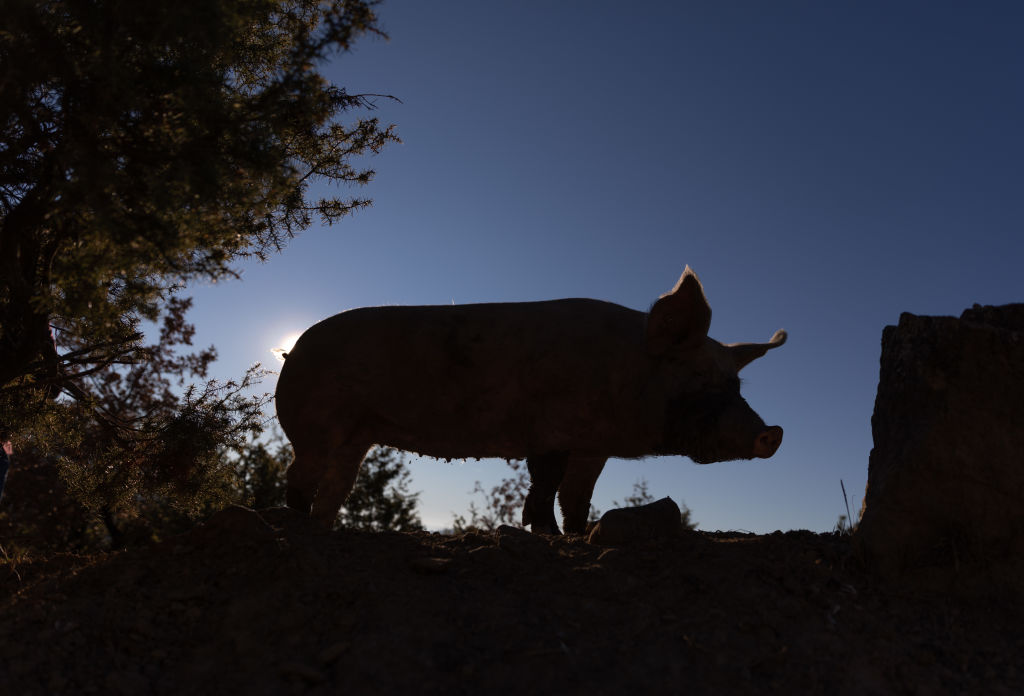The 10 best typical Spanish dishes 1:58
(CNN Spanish) --
Every year, from October to March, the montanera takes place in Spain, which is what the final phase of breeding Iberian pigs is called.
During this period, the pigs graze freely in the meadows of southwestern Spain, feeding mainly on acorns.
A key food that will define their quality and price, once they enter the market as hams.
However, ranchers have been the victims of a rather unusual season.
"The shortage of acorns is very pronounced," laments Antonio Prieto, president of the Iberian Pig Interprofessional Association (Asici).
“This year has been a totally exceptional year and out of control.
We have seen it in all the agricultural and livestock productions that we have had: there has been no pasture, there has been no olive grove ”, he adds.
World Tapas Day: 3 infallible Spanish recipes
When he talks about exceptionality, Prieto refers to the weather circumstances of recent months.
The State Meteorological Agency (Aemet) estimates that in 2022 it has been the warmest year and the sixth driest in Spain since there are records.
Some conditions that have ended up having an impact on the quantity of acorns produced by the holm oaks.
"Normally I feed about a hundred pigs with acorns, this year I have reduced it to 50," laments Miguel Villafaina, an Iberian pig farmer from Jerez de los Caballeros, in the province of Badajoz.
According to him, the fault has been the drought, "since it has caused a premature drop in acorns, with which there are farmers who have not been able to feed all their pigs with this fruit."
Given this situation, those farmers who have not been able to feed their pigs with acorns have had to do so with a mixture of bait and other natural resources from the pasture.
This demotes future hams to a lower sales category than when they eat the fruit of the holm oaks.
advertising
An impact that has been felt in many other pasture areas of the Autonomous Community of Extremadura.
“Last year we certified Dehesa de Extremadura with the Protected Designation of Origin, DOP, close to thirty-one thousand pigs.
This year we have just over a third of that amount, ”says Álvaro Rivas, technical director of the DOP Dehesa de Extremadura when he is contacted by CNN.
"The holm oak endures a lot, but these sudden changes affect the maturation of the acorn and cause the peduncle that joins the acorn to soften and the fruit falls green," says Rivas.
Asked about the possible negative impact that this could have on his finances, Villafaina tells us that he can cover this year's deficit with the surpluses from previous years.
“The consumer is not going to feel the impact,” he adds.
Climate change or natural cycles?
The relationship between the global migration crisis and climate change 9:12
Despite being striking, Rivas believes that this situation responds to a specific phase.
“They are cycles in the area.
If it were about climate change we would be talking about bad years more often, ”he says.
In this sense, he points out that he does not remember a similar situation in the last twenty years.
Now, how common are hot flashes?
The Aemet points out that the heat episodes start every time earlier in Spain.
Specifically, this body pointed out in 2019 that summers currently last about five weeks longer than in the 1980s.
As for droughts, they are normal and recurring phenomena in the Spanish climate, according to the Ministry for the Ecological Transition and the Demographic Challenge on its website, which adds that actions must be carried out for "risk management", and not emergency measures.
However, severe droughts like those suffered in previous decades end up affecting the growth of these trees, says the same ministry.
What variables determine the quality and price of Iberian ham?
There are two variables that determine the price of an Iberian ham in the market: the purity of the breed and its diet.
A good 100% Iberian acorn-fed ham usually sells for US$55 per kilo.
A whole leg of 8 kilograms, which is the average weight for a ham, can cost US$440.
However, a 50% Iberian bait ham costs about US$20 per kilo, with which the whole leg of 8 kilograms costs about US$160.
But these differences are not only noticeable in the pocket, but also on the palate.
Which country has the best food?
As Asici points out, there are three types of food that pigs can receive in their fattening phase: acorns and other resources from the pasture, feed mixed with natural resources from the field, or just feed.
Those who receive the first type of food are marked on the sales labels as “bellota” ham, the second are known as “cebo de campo” and the latter are known as “cebo” hams.
But the purity of its breed will also define the sale price.
The key, according to what Asici tells us, is that the mother be 100% Iberian, since that will allow her offspring to enjoy this distinction.
A pig with a 100% Iberian father and mother will be considered a 100% Iberian ham.
When the father is 50% Iberian, the pig will be considered 75% Iberian.
When the father is of a different breed than the mother, then the pig will be 50% Iberian.
Climate change




/cloudfront-eu-central-1.images.arcpublishing.com/prisa/UNSQPE5JMU4IHNC7OAJZPVJKAU.jpg)

/cloudfront-eu-central-1.images.arcpublishing.com/prisa/JNKEYSPVIXFSA66UHYKQUNTSQA.jpg)
